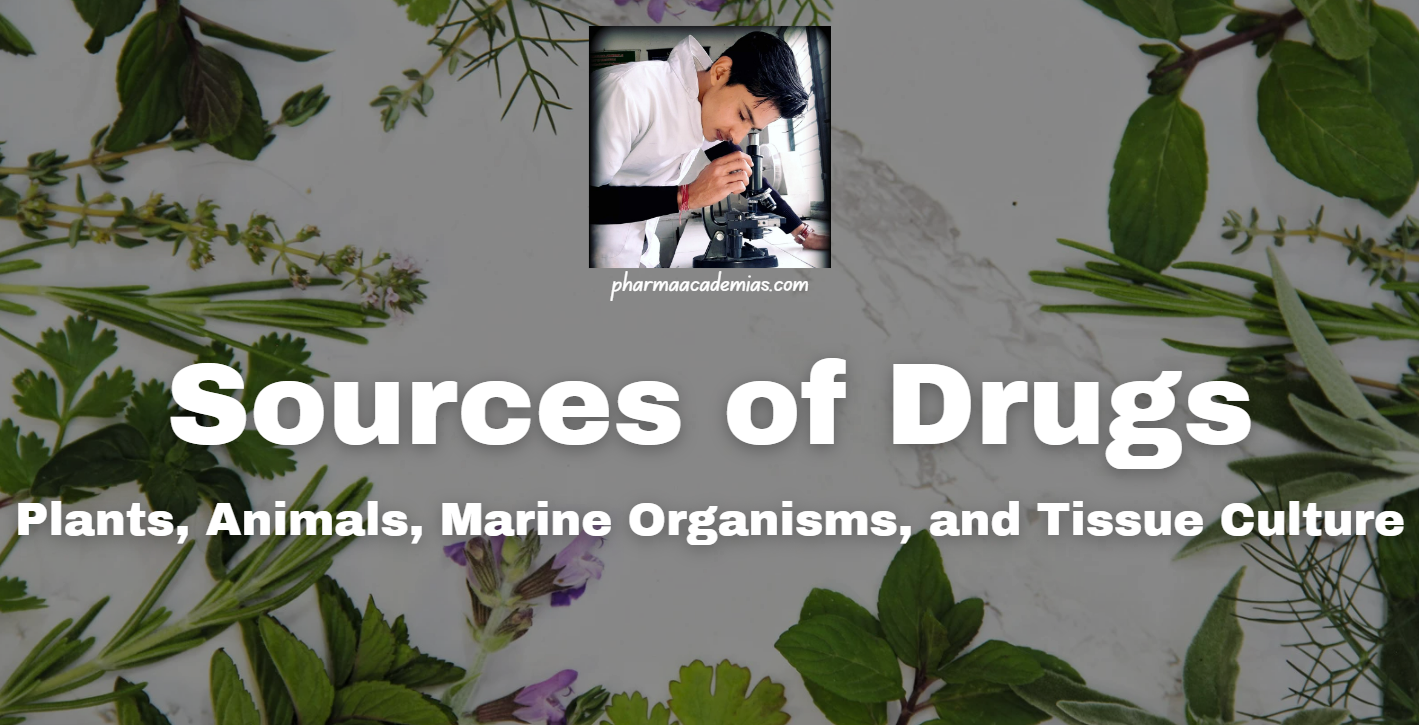Plants Sources of Drugs
Plants have been a rich source of medicinal compounds since ancient times. They produce a diverse array of secondary metabolites, which are compounds not directly involved in the growth and development of the plant but often possess pharmacological properties. Examples of medicinal plants include:
1. Opium Poppy (Papaver somniferum): The opium poppy is the source of various alkaloids, including morphine and codeine, which are used as analgesics and antitussives.
2. Cinchona Tree (Cinchona officinalis): Cinchona bark contains quinine, a compound used in the treatment of malaria.
3. Artemisia annua: This plant produces artemisinin, a potent antimalarial agent.
4. Ginkgo biloba: Ginkgo leaves contain flavonoids and terpenoids with antioxidant and neuroprotective properties, used in herbal medicine for cognitive enhancement and circulatory disorders.
5. Taxus brevifolia: The Pacific yew tree produces paclitaxel, a chemotherapy drug used in the treatment of various cancers.
Plant-derived drugs are often obtained through extraction and isolation processes, where active compounds are purified from plant materials. Modern techniques such as chromatography and spectroscopy are employed for compound identification and characterization.
Animals Sources of Drugs
Certain animals also produce bioactive compounds that have medicinal properties. Examples include:
1. Venomous Animals: Venom from snakes, scorpions, and spiders contains toxins that have potential therapeutic applications. For instance, captopril, an antihypertensive drug, was derived from snake venom.
2. Marine Animals: Marine organisms such as cone snails, sea sponges, and marine worms produce compounds with analgesic, anti-inflammatory, and anticancer properties. Examples include ziconotide from cone snail venom and cytarabine from sea sponge.
3. Hirudo medicinalis (Medicinal Leech): The saliva of medicinal leeches contains anticoagulant compounds used in the treatment of circulatory disorders and in microsurgery to promote blood flow.
Obtaining drugs from animal sources often involves milking or extracting the desired compounds from secretions or tissues. Advances in biotechnology have enabled the synthesis of animal-derived compounds through recombinant DNA technology, reducing the reliance on animal sources.
Marine Organisms Sources of Drugs
Marine environments harbor a vast diversity of organisms that produce unique bioactive compounds. Marine organisms have adapted to extreme conditions and produce compounds with novel structures and pharmacological activities. Examples include:
1. Corals: Coral reefs produce compounds with anti-inflammatory, antiviral, and anticancer properties. Compounds isolated from corals include prostaglandins and alkaloids.
2. Sponges: Marine sponges are a prolific source of bioactive compounds, including alkaloids, terpenoids, and peptides, with potential pharmaceutical applications. Examples include halichondrin from Halichondria okadai and didemnin from Trididemnum solidum.
3. Tunicates: Tunicates, also known as sea squirts, produce compounds such as ecteinascidin-743 (Yondelis®), a chemotherapy drug used in the treatment of soft tissue sarcoma and ovarian cancer.
Exploration of marine biodiversity and the development of underwater exploration technologies have facilitated the discovery of new marine drugs. However, challenges such as sustainable harvesting and environmental conservation must be addressed to ensure the long-term viability of marine drug discovery.
Tissue Culture Sources of Drugs
.Tissue culture, also known as cell culture or in vitro culture, involves the growth and maintenance of plant or animal cells under controlled conditions. Tissue culture techniques have revolutionized drug discovery and production by enabling the synthesis of bioactive compounds in controlled environments. Key applications of tissue culture in drug discovery include:
1. Plant Cell Culture: Plant tissue culture techniques, such as cell suspension culture and organ culture, are used to produce secondary metabolites in vitro. Plant cell cultures offer advantages such as scalability, reproducibility, and year-round production independent of environmental factors.
2. Animal Cell Culture: Animal cell culture techniques are employed to produce recombinant proteins, monoclonal antibodies, and vaccines. Animal cell cultures are used in biopharmaceutical production for the synthesis of complex therapeutic proteins.
3. Microbial Fermentation: Microbial fermentation involves the cultivation of microorganisms such as bacteria, fungi, and yeast to produce bioactive compounds. Fermentation processes are used to produce antibiotics, enzymes, and other pharmaceuticals on an industrial scale.
Tissue culture techniques offer precise control over culture conditions, allowing for the optimization of growth and metabolite production. They also provide a sustainable alternative to traditional methods of drug production, reducing the reliance on wild harvesting and minimizing environmental impact.
In conclusion, plants, animals, marine organisms, and tissue culture represent diverse and valuable sources of drugs with significant therapeutic potential. Exploration of these sources, coupled with advances in biotechnology and drug discovery technologies, holds promise for the development of novel medicines to address unmet medical needs. However, sustainable harvesting practices, conservation efforts, and ethical considerations are essential to ensure the responsible utilization of natural resources and the preservation of biodiversity.

